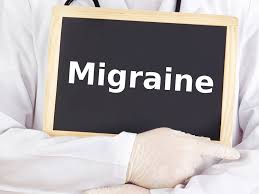- Home
- Editorial
- News
- Practice Guidelines
- Anesthesiology Guidelines
- Cancer Guidelines
- Cardiac Sciences Guidelines
- Critical Care Guidelines
- Dentistry Guidelines
- Dermatology Guidelines
- Diabetes and Endo Guidelines
- Diagnostics Guidelines
- ENT Guidelines
- Featured Practice Guidelines
- Gastroenterology Guidelines
- Geriatrics Guidelines
- Medicine Guidelines
- Nephrology Guidelines
- Neurosciences Guidelines
- Obs and Gynae Guidelines
- Ophthalmology Guidelines
- Orthopaedics Guidelines
- Paediatrics Guidelines
- Psychiatry Guidelines
- Pulmonology Guidelines
- Radiology Guidelines
- Surgery Guidelines
- Urology Guidelines
New Device for Prevention of Migraine without Drugs

A device approved by the U.S. Food and Drug Administration (FDA) has been proven to be beneficial for 50% reduction of headaches in the patients suffering from frequent migraine attacks, according to a new research. This device delivers single-pulse transcranial magnetic stimulation (sTMS). This device is touted to be as effective as the drugs prescribed for migraine treatment, without any harmful side effects.
Migraine is a headache of varied intensity that is often accompanied by sensitivity to light and sound, and nausea. It can result in headache that can last for about some hours to several days. Women are more susceptible to it as compared to men. The drugs used for its treatment include analgesics, antipsychotic, stimulants and triptan. The intake of these drugs is often associated with harmful side effects.
sTMS is a prescription-only, non-invasive device that works by modulation of nerve cells in the brain through induction of mild current and by causing the interruption of nerve hyperactivity associated with migraine. Treatment of migraine with the portable device is easy, painless and just takes a few seconds. sTMS is placed at back of the patient’s head, which delivers focused magnetic pulse with a simple push of a button placed over the device. It can be used both for acute prevention and treatment of migraine.
“The migraine brain is hyperexcitable, and basic science studies have demonstrated modulation of neuronal excitability with its treatment modality,” says Amaal Starling, neurologist and first author of the study. “Our study demonstrated that the four pulses emitted from this device twice daily reduce the frequency of headache days by about three days per month, and 46 percent of the patients had at least 50 percent or less migraine attacks per month on the treatment protocol. Based on the current study and prior studies in acute migraine attack treatment, sTMS not only helps to stop a migraine attack, but it also helps prevent them.”

Disclaimer: This site is primarily intended for healthcare professionals. Any content/information on this website does not replace the advice of medical and/or health professionals and should not be construed as medical/diagnostic advice/endorsement or prescription. Use of this site is subject to our terms of use, privacy policy, advertisement policy. © 2020 Minerva Medical Treatment Pvt Ltd